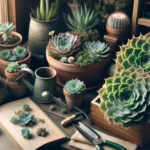Introduction to Sempervivum Kalinda
Welcome to the fascinating world of Sempervivum Kalinda, a variety of succulent that captures the hearts of plant enthusiasts everywhere. Known for the mesmerizing symmetry of its rosette-forming leaves, this charming succulent is more than just a pretty face. Its resilience and low maintenance make it a star in the realm of easy-to-care-for plants. Imagine a plant that thrives on neglect – that’s Sempervivum Kalinda for you!
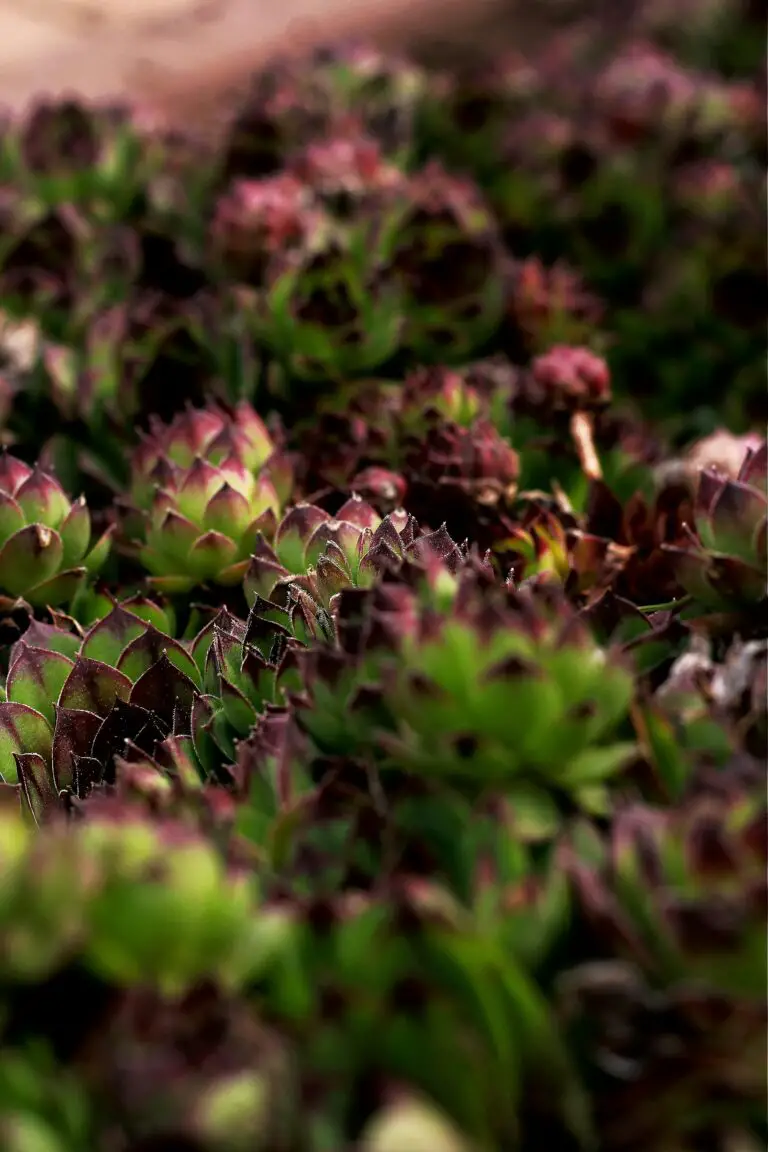
Diving into the world of Sempervivum Kalinda, you’ll discover a plant that adores the sun’s embrace and requires minimal watering – a survivalist in the plant kingdom. Picture this: as you stroll through a rock garden on a crisp, sunny day, your gaze falls upon a cluster of jewel-toned rosettes. These are the resilient sentinels of the garden, illustrating the sheer tenacity of nature. Here’s a curated resource that dives deeper into the captivating care narrative of our green companion.
One of the many reasons gardeners venerate Sempervivum Kalinda stems from its adaptability. In the face of adversity—be it drought, poor soil, or scalding temperatures—it stands unyielding. And while you’re exploring the wide world of succulents, this guide can serve as your compass, uncovering the secrets to nurturing these delightful plants.
Now, if you’re contemplating adding a touch of botanical elegance to your abode, look no further than Sempervivum Kalinda. This succulent doesn’t just survive; it thrives, revealing nature’s extraordinary spectacle. So, why is it adored by gardeners? It’s simple: Sempervivum Kalinda brings distant landscapes into your living space, a snippet of the natural world that grows alongside you.
The Natural Habitat of Sempervivum Kalinda
Have you ever wondered where the resplendent Sempervivum Kalinda first sank its roots into the Earth? The compelling allure of this succulent lies in its ability to flourish in the most unforgiving landscapes. Let’s embark on a virtual journey to the craggy cliffs and high-altitude hideaways synonymous with the tenacious ‘Hen and Chicks’ of the plant world.
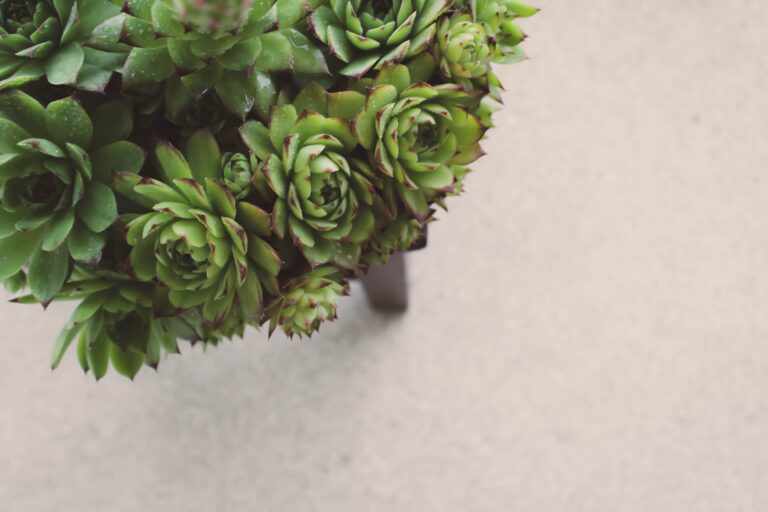
Imagine rocky outcrops and the gritty soil of mountainous regions. These are the arenas where Sempervivum Kalinda showcases its survival prowess. Staring down at potential droughts with nonchalance, it has a knack for retaining precious moisture within its thick, fleshy leaves. A master of self-preservation, this succulent needs little more than the kiss of sunlight and a whisper of rainwater to prosper.
Emulating such conditions can transform your space into a succulent sanctuary. By infusing your garden with gritty, well-draining soil and ensuring ample sunlight, the Kalinda’s vibrant rosettes will reward you by flourishing with minimal fuss. It’s like turning your backyard into a tiny alpine retreat!
There’s a rhythm to the Kalinda’s existence, with color changes that mirror the shifting of seasons. A novice admirer might stand spellbound as it transitions through hues of emerald in spring to tawny flames in summer. It is a testament to the Kalinda’s hardy nature that it thrives where others may falter. For a deeper dive into their adaptation skills, this resource provides a fascinating read.
The more we align our gardening techniques with the Kalinda’s innate preferences, the more we become stewards of their legacy. Observing this succulent’s resilience, we learn to appreciate the natural beauty and tenacity it represents, and in turn, the Sempervivum Kalinda graces our lives with its extraordinary presence.
Key Requirements for Optimal Growth
Welcoming the Sempervivum Kalinda into your home means you’re in for a delightful journey filled with vibrant rosettes and engaging care rituals that add a touch of nature’s resilience to your space. Let’s unearth the secrets to ensure your ‘forever alive’ companion thrives.
Soil: The Foundation of Vitality
The right soil mix sets the stage for Sempervivum Kalinda’s success. This hardy perennial demands a well-draining medium, akin to its native rocky habitats. Imagine a blend of coarse sand, perlite, and potting mix — a concoction that lets water run through eagerly, avoiding the dreaded soggy roots that spell disaster for many a succulent enthusiast. It’s this gritty texture that whispers a silent promise of breathability to your Kalinda’s roots, allowing them to flourish.
Sunlight: The Energy Catalyst
Sunlight is to Sempervivum Kalinda what applause is to an artist — utterly essential. Place your Kalinda in a location where it can bask in at least six hours of direct sunlight daily. Think of a south or east-facing windowsill where morning or late afternoon sun cradles the succulent in golden warmth, boosting its growth and intensifying the coloration of its leaves like an artist adding strokes of brilliance to a canvas.

Water: The Art of Balance
Mastering the watering regimen of Sempervivum Kalinda is a balancing act. Overzealous watering is a pitfall to be avoided, as Kalinda has mastered the art of drought survival. Instead, mimic the infrequent but generous downpours of its natural setting — soak the soil thoroughly when it’s dry to the touch, then step back. It’s this ebb and flow scenario that encourages the roots to delve deeper, seeking sustenance and stability, thus bolstering the plant’s inherent vigor.
Temperature: Comfort in Fluctuation
Contrary to our quest for constant comfort, Sempervivum Kalinda revels in the temperature swings of its alpine heritage. Comfortable within a range of 65°F (18°C) to 75°F (24°C) during the day and cooler at night, it thrives on variation. This succulent’s hardy nature can withstand frost and scorching sun, but its preferred climate oscillates gently, reminiscent of its mountain origins where days and nights tell tales of drastic contrasts.
In nurturing the Sempervivum Kalinda, you are embarking on a journey with a plant that echoes the resilience of life itself. With these key requirements in mind, you can watch your succulent blossom into a robust emblem of nature’s enduring strength.
Planting and Repotting Best Practices
When you welcome a Sempervivum Kalinda into your life, you’re bringing home a piece of nature that’s both resilient and striking. But to keep it thriving, understanding the art of planting and repotting is key. Let’s get our hands dirty and dive into a step-by-step guide that will turn you into a Sempervivum whisperer!
First things first, the pot. Choosing a home for your Sempervivum Kalinda isn’t just about aesthetics; it’s about functionality. Opt for a pot with ample drainage holes to prevent waterlogging, which can be the kiss of death for these drought-loving darlings. A terra cotta or ceramic pot is your best bet, creating a breathable environment for those roots to flourish.
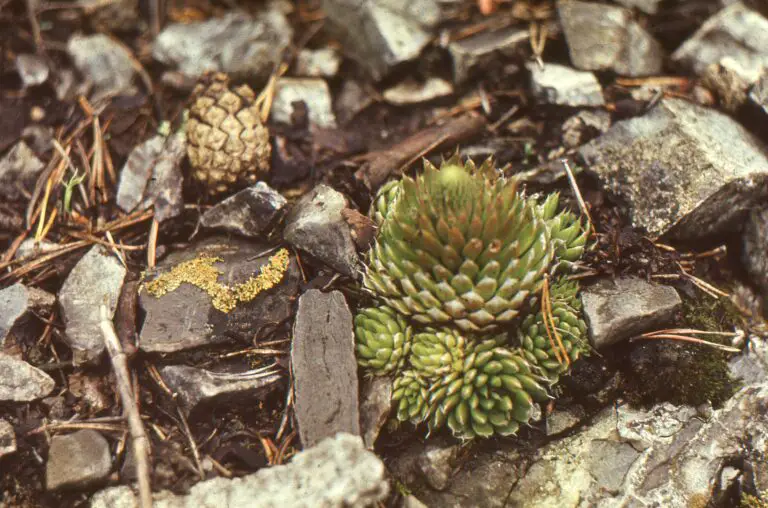
Now, let’s talk soil. Sempervivum Kalinda craves a gritty, free-draining mix that mimics its natural rocky habitats. Mix in some perlite or coarse sand to your potting soil, and watch your plant thank you with vigorous growth. Remember, water should run through the soil like gossip through a small town, quick and uninterrupted.
Planting your Sempervivum isn’t a one-and-done deal. These plants grow, change, and sometimes outgrow their pots. When your plant looks like it’s wearing a pot three sizes too small, it’s time to repot. This can either be done during the spring when growth is most active or any time you notice the roots peeking out like curious explorers.
Be gentle as you ease your Kalinda out of its old pot, treating its roots with the tenderness of a first date. Tease out the roots a bit before settling it into its new pot, filled with that perfect, fast-draining soil you’ve prepped. Then, give it a good drink but don’t drench it. Sempervivum Kalinda likes its soil like a moist cake, not a soggy soup.
Remember, your Sempervivum Kalinda isn’t just a plant; it’s a statement. By following these best practices for planting and repotting, you’re setting the stage for a show-stopping, low-maintenance centerpiece that will spark conversations and admiration. Who knew a little succulent could do so much?
Propagation Techniques for Sempervivum Kalinda
Ready to grow your Sempervivum Kalinda family? This section’s going to feel like a chat over the garden fence as we explore propagation magic with these plucky plants. Let’s deep dive into how you can make little “Kalinda clones” right in your backyard!
Offsets: Tiny Tim’s of the Plant World
Meet the offsets, often referred to as “chicks” – that’s right, these are the baby Kalindas hitching a ride on the mother plant, fondly known as the “hen”. The process couldn’t be simpler. Once the chick has a few leaves of its own, gently twist it away from the hen, roots and all. I had a neighbor, let’s call her ‘Green-thumb Greta’, who made an art out of this: just a gentle tug and voilà, a ready-to-plant chick perfect for growing a lush green succulent tapestry.
Take a peek at this video, where you can catch a glimpse of how rewarding this tactile task can be. You’ll see Garden Guru Gerry (not his real name, but it fits) deftly pops these chicks into their new homes with finesse that comes from years of experience – and now you can too.
Sowing the Seeds of Success
Going the seed route is a test of patience, but oh, the rewards! Picture this: a tiny Kalinda sprout pushing through the soil, a miniature victory flag. Sowing seeds is best done in well-draining soil during the cooler temps of early spring. A word from the wise: don’t bury these seeds deep; they’re sun worshippers and need light to germinate. It’s like that time I tried to sprout them in a dark corner of the porch – no show. Lesson learned: they love the limelight!
Division: Succulent Surgery
Last but not least, division. Think of it as plant surgery where you, the surgeon, use your expertise to slice the plant at the root, creating standalone specimens. It reminds me of baking – just like how you cut dough to make more pastries. Just ensure each section has a part of the mother root, and you’re all set for a successful transplant. It’s a little like baking – split the dough, and boom, more treats… or in our case, more Kalindas!
If you’re looking for more succulent tips, make sure to check out The Ultimate Guide to Succulent Care. It’s like the bible for succulent enthusiasts, offering nuggets of wisdom for everyone – from rookies to the seasoned green-fingered mavericks!
Common Pests and Diseases and Prevention Strategies
Just like a knight stands guard, ever-watchful against invaders, so too must we be vigilant in protecting our cherished Sempervivum Kalinda from the perils of pests and diseases. Our mission isn’t just to react to these threats but to outwit them with preemptive strikes—learning their moves, predicting their patterns, and crafting an impenetrable defense.
Battling the Bug Brigade: Aphids, Mealybugs, and Spider Mites
Imagine you’re sipping tea in your garden, admiring your collection of Sempervivum Kalinda, when you notice something unsettling. On a closer look, your eyes lock onto tiny aphids engaged in a shameless feast on the sap of your succulents. These little vampires, alongside mealybugs and spider mites, form the notorious ‘Bug Brigade’. Their modus operandi? Sucking the life out of your plants, literally, leaving them weakened and withered.
The trick to outsmarting these minuscule marauders is regular observation. Check the undersides of leaves and crevices where they love to hide. When spotted, act fast! A soft spray of water can dislodge spider mites, while insecticidal soap or neem oil can address a broader spectrum of squatters. Consistent checks and early intervention will help keep your Kalinda colony thriving.
Rooting Out Rot: The Silent Succulent Assassin
Now let’s talk about a stealthy assailant that strikes from below—the infamous root rot. Fueled by overwatering or poor drainage, this silent succulent assassin can lead to a soggy demise for your Sempervivum Kalinda. Picture coming home to find your once-proud succulent slumped and lifeless; its roots a rotten mess. To prevent this soggy sorrow, ensure your soil is well-draining and your watering schedule is attuned to the plant’s needs—less is often more.
Fungal Foes: Mildew and Mold’s Dastardly Deeds
But let us not forget about the fungal foes—powdery mildew and mold. They launch their attack in the cool, damp darkness, often going unnoticed until their white, dusty spores blanket your beloved plants. To halt their dastardly deeds, maintain good air circulation around your Sempervivum Kalinda and keep foliage dry. When you water, target the roots and avoid the leaves to reduce the fungal fiesta invitation.
In our quest to harbor healthy, vibrant Sempervivum Kalinda, we must remain observant, proactive, and well-informed. Keep in mind these simple yet effective strategies: inspect regularly, water wisely, and ensure good air flow. With these practices, your Sempervivum Kalinda will be well-equipped to fend off pests and diseases, standing tall and triumphant in the face of adversity.
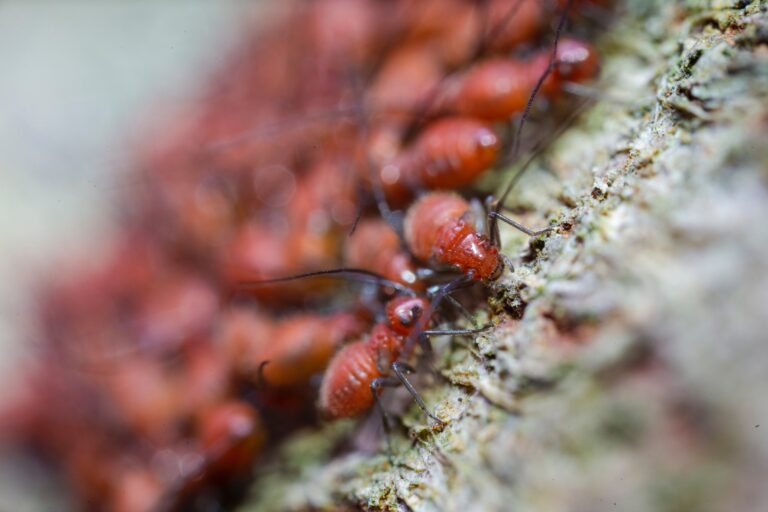
Seasonal Care for Your Sempervivum Kalinda
When it comes to maintaining the resiliency and beauty of your Sempervivum Kalinda, understanding its seasonal needs is like having a green thumb superpower. The secret? It’s all about adjusting your care routine to protect and nurture your Sempervivum Kalinda through the changing seasons. Let’s dive into some tips that will keep your succulent companion vibrant and healthy all year round.
Spring into Action
Spring is a time of awakening, not just for bears but for your Sempervivum Kalinda too! As the frost of winter melts away, these succulents stretch out for the warm embrace of the sun. This is the perfect time to amp up the watering schedule, as the increased sunlight and temperature will fuel their growth spurt. Remember, it’s like prepping a runner for a marathon—a steady increase to hit the peak season in top condition.
Summer Lovin’
Ah, the bliss of summer, with its long days of sunshine and warmth. Your Sempervivum Kalinda loves it but always in moderation. Plant parents should be vigilant about sunburn (yes, plants get it too!) and dehydration. Move them to a spot with morning sun and afternoon shade to protect their delicate leaves. And about watering—it’s a balancing act. Too little, and they’ll parch; too much, and they’ll bloat.
Autumn Acclimatization
As the leaves begin to change, it’s a signal to your Sempervivum Kalinda that cooler days loom ahead. This is the time to gradually reduce watering and prepare them for the dormancy of winter. Think of it as tucking them into bed for a long nap—they need less food (water) as their growth slows down.
Winter’s Rest
Winter for Sempervivum Kalinda is not a death sentence but rather a quiet time of rest and conservation. With a drop in temperature, your watering can should mostly hibernate as well. The key to winter care is ensuring that they’re in a well-drained spot to prevent root rot. Picture them as hibernating bears—minimal intake, maximum survival strategy.
You see, tending to your Sempervivum Kalinda isn’t rocket science—it’s about understanding and adapting to the rhythm of the seasons. By following these simple tips, you’ll become a whisperer to these hardy succulents, decoding their needs, and ensuring they thrive throughout the year. Soft gloves, nurturing heart, and a watchful eye—arm yourself with these, and your Sempervivum Kalinda will reward you with its stunning presence season after season. Happy gardening!
Creative Landscaping Ideas with Sempervivum Kalinda
Are you looking to add a splash of texture and resilience to your garden? Look no further than Sempervivum Kalinda, a succulent that not only survives but thrives with minimal fuss. In our quest to craft picturesque landscapes, this hardy plant emerges as a versatile and vibrant contender. Let’s dive into some creative ways to elevate your garden’s aesthetic with the charming Sempervivum Kalinda.
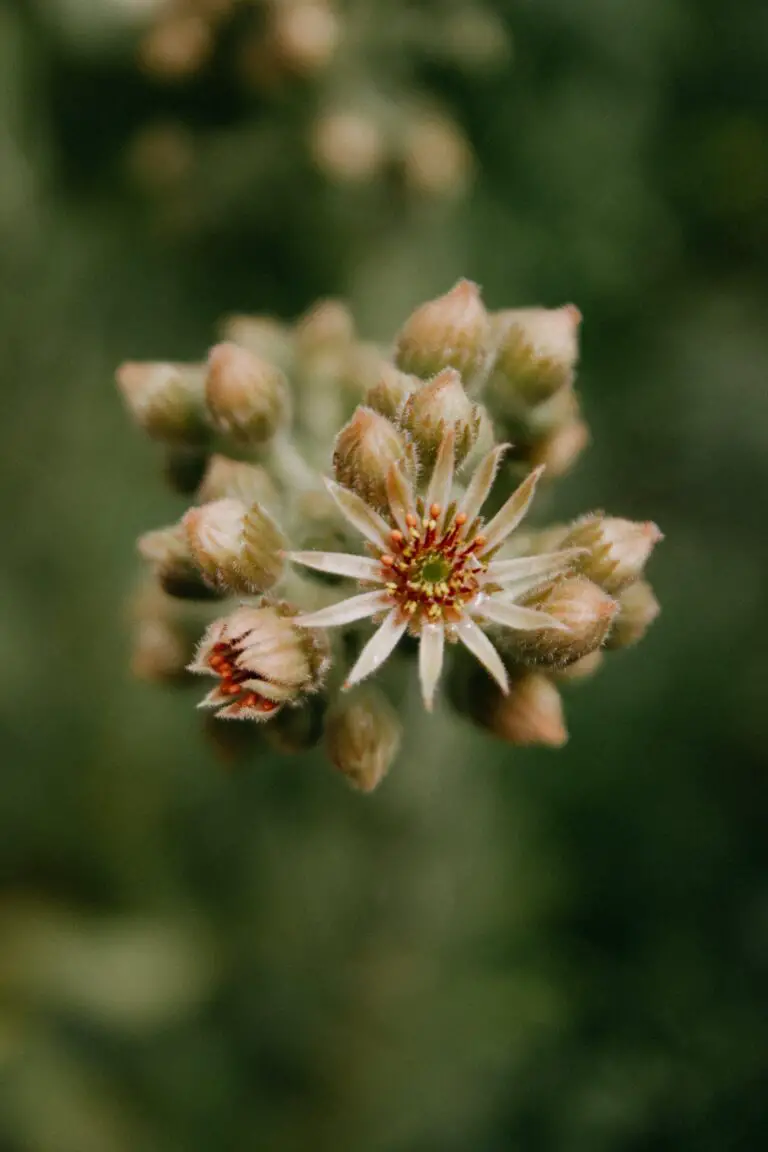
Accentuating Alpine Rockeries
Imagine tucking these succulent jewels into the nooks and crannies of a rockery. The Sempervivum Kalinda’s rosettes mimic the rugged beauty of alpine landscapes, requiring nothing more than a bit of sunshine and well-draining soil. Picture the contrast as their green and reddish hues pop against the greys and browns of your stone selection. This natural pairing is not only visually striking but also a haven for biodiversity, supporting a host of pollinators.
Enlivening Green Roofs and Walls
Thinking vertical can open up new horizons for garden design. Implementing Sempervivum Kalinda in green roofs and living walls presents an innovative way to integrate greenery in urban spaces. These succulents endure the extremes, whether it’s the scorching sun or biting cold, making them ideal for such installations. They offer an everchanging tapestry of colors throughout the seasons, and the maintenance? Minimal!
Containers and Terrariums: A Touch of Whimsy
For those with limited space or a passion for miniature gardening, Sempervivum Kalinda can shine in containers and terrariums. Mix different varieties to create a delightful ensemble of texture and color. As they are slow growers, you can enjoy their quaint symmetry for seasons without the need for frequent repotting. Plus, their drought-resistant nature means you can vacation without the worry of returning to withered plants!
Redefining Borders and Groundcovers
Ever thought of a living border that’s both robust and ornamental? Line your pathways or define your garden beds with these hardy rosettes. They spread graciously, covering the ground with a living mosaic that’s as practical as it is pretty. And since Sempervivum Kalinda is unfussy about soil quality, they can thrive in those challenging areas of the garden where other plants might falter.
Incorporating Sempervivum Kalinda into your garden is more than just planting a succulent; it’s about embracing a design element that is as enduring as it is endearing. They evoke a sense of wonder and resilience, proving that beauty can be found in the most unlikely places. So, unleash your creativity and watch as these succulents transform your garden into a thriving oasis of unique charm!
Troubleshooting Common Problems
Are your Sempervivum Kalinda succulents looking a bit under the weather? Fear not! This rough-and-tumble plant sometimes faces challenges like any other in the quest for perfect growth. Let’s dive into some real-life examples and transform you into a succulent whisperer with these troubleshooting tips.
When Leaves Turn Languid: Addressing Droopiness
Imagine this: you’re gazing admiringly at your Kalinda’s rosettes when you notice they’re drooping like an overcooked spinach. Chances are, your green buddy is either underwatered or drowning in H2O. Here’s the fix – stick your finger into the soil up to the second knuckle. Dry? Time for a drink. Wet? Allow the soil to dry out before the next watering.
The Color Conundrum: Solving Discoloration
Now, let’s paint a picture. If your Kalinda’s leaves are turning yellow or red when they’re not supposed to, you might be dealing with overexposure to sunlight or a nutrient imbalance. Gradually move your plant to a shadier spot or consider a balanced fertilizer to keep those colors in check – vibrant, not vampiric.
Uninvited Guests: Dealing with Pests
Remember that one time at a barbecue when an uninvited guest derailed the whole party? Aphids and mealybugs do the same to your Sempervivum Kalinda. If you spot these pesky intruders, introduce them to a gentle shower of insecticidal soap or neem oil. Bye-bye bugs, hello healthy plants.
Don’t just take my word for it; let’s check out some visual cues for a better grip on the situation. Here’s a video that sheds light on the not-so-obvious signs you might encounter with your Sempervivum Kalinda.
Roots in Disrepute: Tackling Root Rot
Say your plant’s been looking a bit gloomy and the roots are as soggy as a marshmallow in hot cocoa. Sounds like root rot, and it’s a silent killer. Prevention is key: ensure proper drainage and avoid overwatering like the plague. If rot’s already taken hold, gently remove the affected parts, and give your Kalinda a fresh start with new soil and a clean pot.
Leaf Spot Blight: Clearing up the Spots
Picture a constellation. Beautiful in the night sky, not so much on your plant’s leaves. Fungal diseases, like leaf spot, create these unsightly marks. Increase air circulation, dial back on watering, and if necessary, apply a fungicide with a gentle hand. With care, your plant can bounce back as though it’s just had a refreshing spa day.
Remember, Sempervivum Kalinda are hardy by nature, but with the right care techniques, you can tackle these common issues head-on and enjoy a robust, thriving succulent.
Frequently Asked Questions
Stepping into the world of Sempervivum Kalinda care can feel like unlocking a treasure trove of horticultural secrets. To make your journey smoother, let’s sift through a garden of queries that enthusiasts like you often wonder about.
What Soil Mix Best Suits Sempervivum Kalinda?
Imagine Sempervivum Kalinda as the mountaineer of the plant kingdom, preferring a gritty, well-drained soil just like their alpine abodes. A mix of potting soil, coarse sand, and perlite is the trifecta for creating the perfect haven for these hardy rosettes.
How Often Should I Water My Sempervivum Kalinda?
Picture this: you’re trekking through a desert and you find an oasis—that’s what water is to your Sempervivum Kalinda. These succulents thrive on ‘infrequent but deep’ watering sessions, mimicking the rare but refreshing rainfall of their natural habitat.
Is Direct Sunlight a Friend or Foe to Sempervivum Kalinda?
Like a sunbather soaking up the sun, Sempervivum Kalinda basks in full sunlight. However, just as one might apply sunscreen, consider some afternoon shade to prevent sunburn during the peak summer heat.
When is the Ideal Time to Propagate?
Just as a chef picks the ripest fruits for a recipe, timing is key for propagating Sempervivum Kalinda. Spring and summer offer the perfect growth spurt seasons, allowing the ‘chicks’ to root firmly and establish themselves before winter’s chill.
Can Sempervivum Kalinda Survive Frosty Winters?
Winter warriors in their own right, these resilient succulents can indeed hold their ground against the frost. Their secret armor? Ensuring the soil is well-drained to prevent root rot when the temperature plummets.
How Can I Keep Pests at Bay?
If Sempervivum Kalinda were a fortress, aphids and mealybugs would be its invaders. Vigilance and organic treatments, like neem oil, act like sentries guarding against these pesky pests, keeping your succulents as serene as a guarded palace.

By tending to Sempervivum Kalinda with the same care as a jeweler polishing gems, you’ll see these succulents flourish. Pay heed to their simple demands, and you’ll have a low-maintenance, yet spectacularly vibrant plant that rivals the kaleidoscope colors of a sunset.

